The Transformative Potential of Early Childhood Development (ECD): a Focus on the Italian Situation

Nowadays child poverty still affects too many and too young children in the world, mostly in the form of child educational poverty, conceived as the impossibility for children to learn, experiment, and freely foster their capacities, talents and aspirations. Indeed, living in poverty has a serious impact on children’s lives, negatively affecting their educational attainment, health, and happiness as well as having long-term adverse consequences into adulthood. Even a few years of poverty can have negative implications for a child’s development and this is very harmful in the preschool phase, especially from the ages of birth to three, where brain plasticity occurs at a higher rate than at any other time in life. In this regard, the recent studies in neuroscience, pediatrics and economics scientifically prove that early skills breed later skills and that, if not prematurely addressed, early disadvantages and gaps persist, making a later remediation a very costly and difficult – sometimes suicidal – mission, which risks to perpetuate the existing inequalities.
So, what is one of the best ways a country can promote inclusive economic growth, expand equitable opportunity, and end child poverty, guaranteeing every child the best possible start? As confirmed by the revolutionary scientific findings that only recently are been universally recognized in the public debate, the answer is simple: invest in Early Childhood Development (ECD) through a preventative approach – and not a repairing-oriented one –, firmly believing that if we change the beginning of the story, we change the whole story.
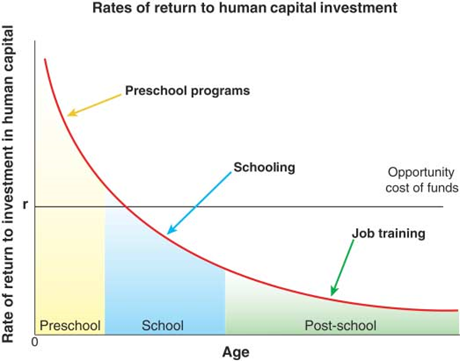
Figure 1: Rates of return of human capital investment in young and disadvantaged children.
Source: Hekman J.J., Skill formation and the economic of investing in disadvantaged children, Science, vol.312, 30 June 2006, pp.1900-1902.
This word (ECD) is generally used to define the period between prenatal development to 8 years of age, a phase of both endless opportunities and irreversible damages, which needs to be better supported together by territorial services, civil society organizations, governments and international institutions through proper actions of advocacy and adequate targeted investments, from which every young child, his family and the whole society – economy too – can benefit. In particular, successful, smart and sustainable ECD interventions require to be implemented as multi-sectoral intervention packages built on existing delivery platforms and anchored in nurturing care, namely in a stable environment that is sensitive to children’s health and nutritional needs, with protection from threats, opportunities for early learning, and interactions that are responsive, emotionally supportive, and developmentally stimulating.
Getting more into the details, only in Italy there are over a million minors living in absolute poverty, the majority living in regions within the South; while more than one minor out of five lives in a state of relative poverty. Due to economic crisis, many families are experiencing a rapid process of descent into impoverishment and, at the same time, the welfare system, given the insufficient investment in children’s needs, is not able to combat poverty and lessen inequalities.
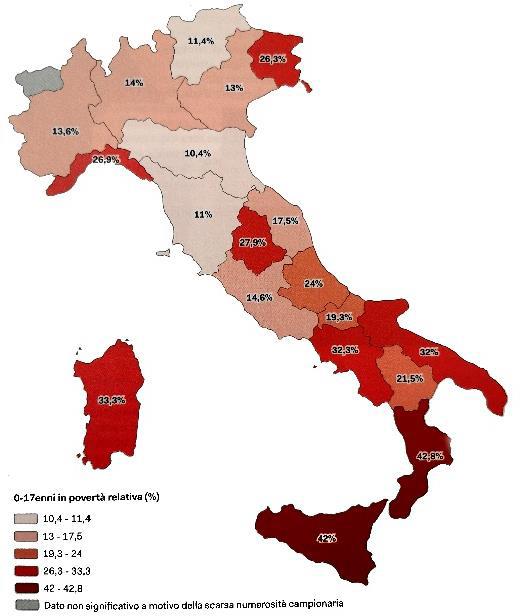
Figure 2: Child relative-poverty rate in Italy by regions.
Source: Save the Children Italia, Atlante dell’infanzia a rischio 2018. Le periferie dei bambini, 2018, p.44.
This condition of deprivation often influences the entire lives of children since their early years, sometimes irreversibly, blocking their cognitive and non-cognitive skills development, meaningfully damaging their resilience and, consequently, their whole future. This is true especially where urban disparities are profoundly rooted, as occurs in the suburbs of the main Italian cities, such as Rome.
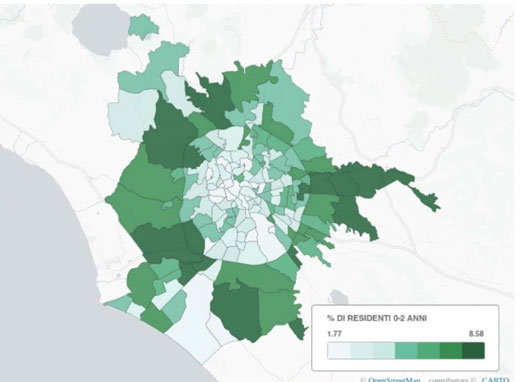
Figure 3: Proportions of residents between 0 and 2 years in Rome, by urban zones and neighborhoods
Source: Asili nido a Roma. La distribuzione per zone urbanistiche della domanda e dell’offerta dei servizi per la prima infanzia nella Capitale – Openpolis, Con i Bambini, 2018, p.13.
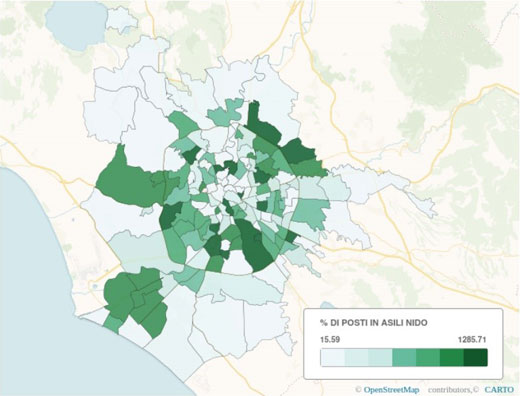
Figure 4: The availability of daycare services in Rome, by urban zones and neighborhoods
Source: Asili nido a Roma. La distribuzione per zone urbanistiche della domanda e dell’offerta dei servizi per la prima infanzia nella Capitale – Openpolis, Con i Bambini, 2018, p.29.
These maps put the attention on a relevant aspect, since the residential community represents another crucial variable that significantly shape the child and family environment, within which the newborns grow up and develop their human potential. In fact, the physical spaces accessible to children create both the opportunities and the constraints for play-based learning and exploration, which are critical for motor, socio-emotional, and cognitive development. Similarly, the availability of high-quality services, including institutions and facilities for learning and recreation, childcare, medical facilities, access to transportation, food markets and the opportunities of employment, vary according to the socioeconomic circumstances of communities. Basically, local access to these essential services for children should be used as a criterion for urban development, which is another environmental factor indirectly affecting ECD. This discussion becomes crucial because, considering the demographic data, most children and newborns in Italy live in this type of areas, with all the limits that this entails.
In short, as can be noted, it is evident that in Italy – as all over the world – inequalities begin at birth. Therefore, this is the crucial moment when each actor who can play a role in ECD has to intervene and, if necessary, act in synergy with other public services for counterbalancing and compensating early adversities and deprivation. According to the above-mentioned needs, Save the Children Programmes Newborn Ribbons and Mother Centres – personally experienced during my 4-months internship in Rome – are conceived together in a unique Local Caring Community (LCC) vision, which looks exactly in this direction.
In particular, Newborn Ribbons (NR) started in 2012 as a low-threshold service within some Italian hospitals – firstly in Bari, Milan and Naples – to listen and accompany future and new parents, with the intention of reigniting some interrupted links between the fragmented ECD-services, and to facilitate a constructive dialogue and coordination between the latter, in order to effectively guarantee an integrated taking-over of the most critical situations. Born from an analysis of needs relating to the new identified forms of poverty and child early deprivation, the concerning project was carried out thanks to an extensive collaboration with health structures and local associations, which have significantly encouraged an early interception process of the most vulnerable newborns, combined with a good practice of listening, referral and bridge-building between people and community-services, triggered also by a shared responsibility of care towards the most complex cases. So, the main specificity of NR is the place and the well-structured and defined reality within which it fits: the hospital, a crucial entry point to reach the newborns and their caregivers. In fact, since the entire "percorso nascita" (pregnancy, childbirth, postnatal) is reported to and traced by the hospital, the latter represents an essential and privileged place of observation, from which it is possible to detect risk areas and factors and, in this way, preventing their worsening and deterioration on the most fragile family units. After the pilot projects activated in the before-mentioned Italian cities, NR has grown considerably in the last years, reaching in 2018 overall 11 different Italian hospitals through different paths and commitments. The map below clearly underlines all the current and active NR social-health presidiums, which are properly equipped, and child-friendly meeting places addressed to mums and babies.
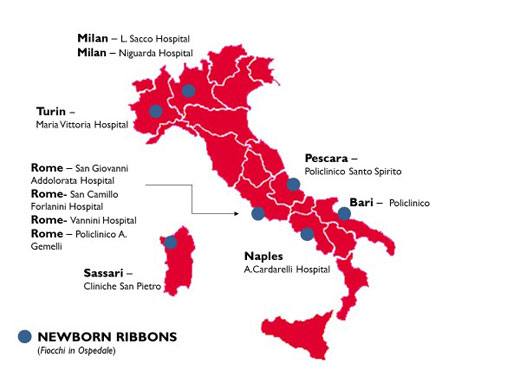
Figure 5: Newborn Ribbons map by active presidium in Italian hospitals
Source: Newborn Ribbons Project Fact Sheet, Save the Children Italia, 2018.
Aimed initially at identifying a set of comprehensive, effective and replicable attitudes, measures and public policies promoting the fulfillment of the youngest’ human potential and the psycho-physical-social wellbeing of the newborns and of their parents, NR seeks to build a bridge between the hospitals and the existing territorial services. For instance, NR plays a catalyst action in consolidating positive synergies between gynecology, midwifery and pediatrics wards, as well as in reinforcing collaboration between the psycho-social and maternal-infant units for a real integrated taking-over of the most difficult cases. The latter has to be conceived as an active and protective measure which goes beyond the hospital discharges and which should be extended also in home and community life, through home-visiting services and a continuous follow-up. Nevertheless, there are some key challenges that the program will have to face in the next years. Among these, NR operators and coordinators are required to adopt new, flexible and creative means in order to adequately respond to an increasing plurality of cultural and linguistic necessities, caused by a strong majority of non-Italian mothers. In this multicultural context, the NR presidiums, as well as the hospitals in general, need a cultural mediator profile who can function as a zipper between different cultural paradigms. Furthermore, the current weakening of the Italian pregnancy counsellors (consultori familiari) makes Save the Children action even more necessary and urgent thorough the NR units, since all the new mothers have to be properly informed about their pregnancy status, the prenatal and postnatal visits and, generally, about the existing opportunities to live this crucial moment the best they can, according to their needs and preferences.
The other analyzed Save the Children program, Mothers Centre (MC), started in 2014 as a network of open centres for children who live in particularly vulnerable situations, due to poverty or other interconnected and multidimensional early deprivations. Each MC offers a concrete support to mothers and families, by providing free advices and activities, focused on enhancing mothers’ and children’s capabilities. Until today this program has considerably grown right up to 14 MC units, supported by 14 different local CSOs (local implementing partners) and located in 12 Italian cities. In this regard, the map below clearly underlines all the current and active MC presidiums. The latter are mother-and-child friendly and equipped spaces addressed to preschool aged children and their mums, placed in the extreme suburbs of the main Italian cities, where a team of psychologists, pedagogues, social workers and professional consultants (such as lawyers and pediatricians) provide a free-of-charge services of different kind, among which legal advices, laboratory-activities and professionalizing workshops.
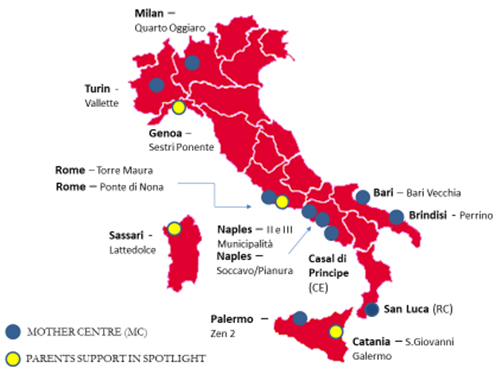
Figure 6: Mothers Centre map by active MC in Italian cities and neighborhoods
Source: Mothers Centre Project Fact Sheet, Save the Children Italia, 2018.
It is important to underline that the selected neighborhoods in which MC is present are characterized by a high-density housing, a lack of gathering places, reduced connections with the center, environmental degradation, high poverty and unemployment rates, significative percentages of criminality (also juvenile delinquency) and of school drop-out. Considering these alarming scenarios, the main scope of MC program is contrasting and reducing all the risk-factors which fuel the broad, multidimensional and complex issue of child educational poverty. In order to fulfil this general aim, MC proposes, coordinates and monitors a set of targeted actions which entail an integrated taking-over of those children who live in serious and dangerous conditions of deprivation, through co-defined and personalized support paths. In short, the MC program represents an important point of reference for the local residential communities in which it is placed, especially for preschool-aged children and their mothers – but also, increasingly, for fathers. By intervening early and locally, MC concretely implement and enforce some crucial international ECD standards, fully complying with the Sustainable Development Goals, the Convention on the Rights of the Child and the Nurturing Care frameworks. Moreover, its comprehensive action, free access and territorial network are relevant added values which need to be deepened, continuously nurtured and furtherly reinforced towards new integrated and evolving modalities to support the most deprived family-units. In this regard, a more constant and structured practice of dialogue and collaboration requires to run at full capacity in each MC, mostly in those cities where are active more than one Save the Children projects.
These selected case-studies claim that, if considered together and in synergies with the local implementing partners and the existing territorial services in an holistic, integrated, child-friendly and community-based view, NR and MC can make a difference in the most deprived children’s early years and be the first seed of a so called Local Caring Community (LCC): a concept that represents an innovative and potential escape-route from education poverty towards which to look, in order to guarantee newborn childdren an enriching and stimulating environment that allows them to reach their full human potential. More specifically, this entity is characterized by some distinctive features that shape its establishment. Among these, the LCC design-process has to take into account: the territoriality, conceived as an efficient catchment area; the subsidiarity and sustainability aspects; besides a multidisciplinary and integrated approach, a general flexibility and a low-threshold access.
To sum up, after having presented the main findings emerged by those particular mother-and-child-focused and community-based interventions, clearly emerges that some important milestones have been achieved, while relevant challenges require to be faced with new, innovative and creative approaches which can respond even more promptly and efficiently to mothers’ and young children’s necessities. In this sense, LCCs represents a good example and an ambitious vision in terms of new ways of dialogue, cooperation and collaboration among different types of actors, which requires to be strengthened. In particular, with regard to the Italian ECD situation – significantly described by the ASviS and CRC Group reports’ data –, this means reducing regional and urban disparities that irreversibly damage the child’s life and triggering a change of course focused on a culture of a shared responsibility. The latter can only be done if ECD policy-and-decisions-makers start formulating systematic national measures – and not only isolated one-off options – aimed to ease the access to adequate healthcare support and information concerning the "percorso nascita" and, above all, to integrate the health sector with the social one in a real holistic vision. This process has to take into account a strategic plan to reach the 33% daycare-coverage established by the EU Barcelona targets, an object which is still very far from being reached in the Southern regions and whose scope is perfectly in line with the Target 4.2 of 2030 Agenda, that explicitly emphasizes the importance of a quality pre-primary education.
To conclude, there is still a lot that can be done to promote and prioritize ECD with few necessary resources, especially in the next eleven years, in which world leaders have a unique opportunity to construct a strong political will to invest in the early years for long-term individual and societal gains towards the achievement of the 2030 Agenda.

